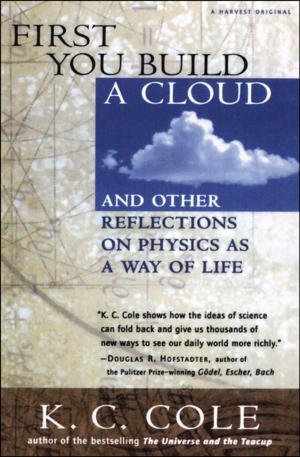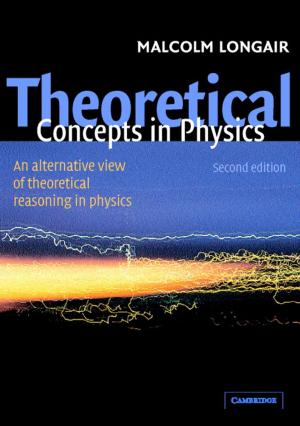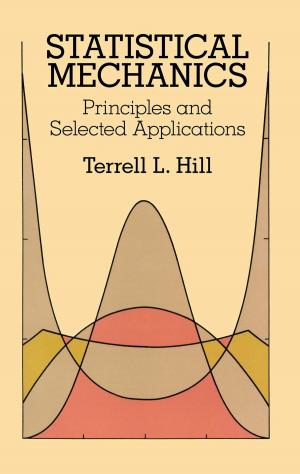| Author: | Sander Lam | ISBN: | 9781301639908 |
| Publisher: | Sander Lam | Publication: | March 10, 2013 |
| Imprint: | Smashwords Edition | Language: | English |
| Author: | Sander Lam |
| ISBN: | 9781301639908 |
| Publisher: | Sander Lam |
| Publication: | March 10, 2013 |
| Imprint: | Smashwords Edition |
| Language: | English |
I'm sure you have ever seen a rainbow, and maybe you even have a general idea of how it arises. But how thorough is your knowledge of this phenomenon really?
Perhaps you know that sometimes “the” rainbow is accompanied by a second rainbow. But do you know whether there is a third rainbow? If there is, in which direction is it, and why do you never actually see it? Or, if there is no third rainbow, why are there exactly two rainbows? Why is the area between the first and second rainbow relatively dark? Why is the sequence of the colors in the second rainbow reversed relative to the first one? What are “supernumerary” rainbows, and how do they arise? What does the rainbow tell us about the properties of light and matter?
In “Secrets of The Rainbow” we will discuss these kind of questions extensively. For the sake of accuracy we will perform some mathematical calculations, at secondary-school level. If you're not a hero at math, you can “read around the formulas”. The main conclusions from the calculations are reproduced in the pictures and the text. By skipping the calculations you won't know how those conclusions were reached, but you will still have a decent idea of how the rainbow arises.
On the internet you can find in many treatments of the rainbow a simple argument that is supposed to explain, without calculations, why the color sequence of the secondary rainbow is the mirror image of that of the primary one. However, it turns out that this simple explanation is wrong. At this point, as so often in life, the intuition is not a reliable guide. By explicit calculations and clear pictures we will step by step explain the real details behind this inversion.
Apart from the rainbow itself, we discuss some related topics, albeit superficially. We take a look at the functioning of the eye, and the interaction between light and matter. We note that our calculations are based on an approximation, geometrical optics, and discuss sketchily some situations where this approximation does not apply.
Finally, we focus on some basic properties of light, and the problematic role of light as the connecting link between the two major contemporary theories: the theory of relativity and quantum mechanics.
I'm sure you have ever seen a rainbow, and maybe you even have a general idea of how it arises. But how thorough is your knowledge of this phenomenon really?
Perhaps you know that sometimes “the” rainbow is accompanied by a second rainbow. But do you know whether there is a third rainbow? If there is, in which direction is it, and why do you never actually see it? Or, if there is no third rainbow, why are there exactly two rainbows? Why is the area between the first and second rainbow relatively dark? Why is the sequence of the colors in the second rainbow reversed relative to the first one? What are “supernumerary” rainbows, and how do they arise? What does the rainbow tell us about the properties of light and matter?
In “Secrets of The Rainbow” we will discuss these kind of questions extensively. For the sake of accuracy we will perform some mathematical calculations, at secondary-school level. If you're not a hero at math, you can “read around the formulas”. The main conclusions from the calculations are reproduced in the pictures and the text. By skipping the calculations you won't know how those conclusions were reached, but you will still have a decent idea of how the rainbow arises.
On the internet you can find in many treatments of the rainbow a simple argument that is supposed to explain, without calculations, why the color sequence of the secondary rainbow is the mirror image of that of the primary one. However, it turns out that this simple explanation is wrong. At this point, as so often in life, the intuition is not a reliable guide. By explicit calculations and clear pictures we will step by step explain the real details behind this inversion.
Apart from the rainbow itself, we discuss some related topics, albeit superficially. We take a look at the functioning of the eye, and the interaction between light and matter. We note that our calculations are based on an approximation, geometrical optics, and discuss sketchily some situations where this approximation does not apply.
Finally, we focus on some basic properties of light, and the problematic role of light as the connecting link between the two major contemporary theories: the theory of relativity and quantum mechanics.















